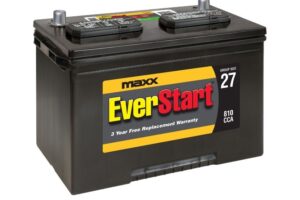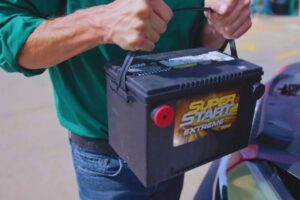The last thing you want to happen is your car to stop running in the middle of the rain. It is already a big inconvenience in itself. But aside from that, some people also don’t advise jumpstarting a car during this weather condition. Is this true? Or can you jump a car in the rain?
According to experts, jumpstarting a car in the rain is safe and will not cause any harm since the electrical system in cars has a very low voltage. The water is not an issue as long as the jumpstarting process is done in proper sequence.
Read on to learn more about jumpstarting a car in the rain.
Can You Jump a Car in the Rain?
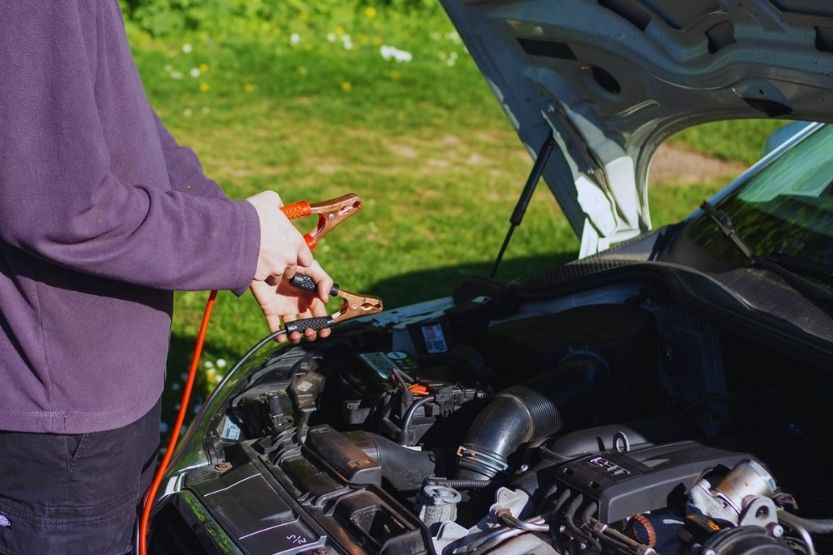
Automotive professionals say that jumpstarting a car in the rain is safe and will not cause any harm. This is because the electrical system in cars is not high enough to pose any danger. The water is not an issue, either, as long as the jumpstarting process is correctly done.
Of course, jumpstarting a car in the rain is not ideal. It is the last thing that you would want to experience. But if you don’t have a choice, it’s good to know that it is possible.
Here are ten steps for jumpstarting a car battery in the rain:
- Jumper Cables Should Be in Good Condition
- Take All Necessary Precautions Before Jumpstarting a Car
- Check the Location of the Batteries
- Read the Owner’s Manual
- Turn Off All Electrical Items
- Connect the Clamps
- Avoid Cross Connecting Cables
- Start the Car with a Good Battery
- Start the Car with the Dead Battery
- Disconnect the Cables in the Correct Order
Let’s briefly explain each step:
1. Jumper Cables Should Be in Good Condition
First, you need to ensure that the jumper cables are not worn out and are in excellent condition. This is because the insulation can get damaged if the cables are bad. This can result in a short circuit, especially if the water gets into the cable.
It is best to protect yourself and the car battery from the rain using an umbrella. That’s why it is best to have someone assist you in this kind of situation.
2. Take All Necessary Precautions Before Jumpstarting a Car
The next thing to do is take all the necessary precautions before starting your car. This means wearing gloves and having a presence of mind.
This way, you will be able to connect leads in their proper order. At the same time, you will never forget not to touch both battery terminals simultaneously. Your car battery may only have 12 volts, but you still need to be careful.
3. Check the Location of the Batteries
Jump leads are typically a few meters long only. That’s why you have to check the location of the car batteries. Ensure that the running car is positioned to close both batteries as possible.
There are vehicles with car batteries located in the trunk. It is possible to find the jumpstart terminals beneath the hood in this case.
Also, don’t forget to double-check the jumper cables to ensure that they are in good condition. There should be no cuts and tears on the plastic insulation, and the clamps must be firmly connected to the cables.
4. Read the Owner’s Manual
You are familiar with the Owner’s Manual, which came along with your car when you bought it. It has a specific section dedicated to jumpstarting. Read and follow the guidelines to prevent damaging your car and the running car.
5. Turn Off All Electrical Items
The electrical items you won’t need for jumpstarting must be turned off. These include the air conditioning system, windshield wipers, radio, and lights. This way, you won’t be wasting power on unnecessary electrical items.
6. Connect the Clamps
Each car battery has two terminals which come in red and black. The jumper cables come in red and black too. When you connect the cables, make sure to hold both clamps. This way, you will prevent them from touching any metal.
Logically, you must connect the red cable to the red terminal of the working battery. Then, connect the other clamp to the dead battery’s red terminal. As for the black cable, it must be attached to the black terminal of the running battery. But you don’t have to attach the other clamp to the dead battery.
Instead, connect it to a non-moving metal component as far away from the battery. This will avoid sparks from igniting the hydrogen gas produced by the battery.
7. Avoid Cross Connecting Cables
Make sure not to cross-connect the cables. If you accidentally attach the red terminal to the black terminal, this will result in a short circuit. That’s why the presence of the mind is significant.
8. Start the Car with a Good Battery
The next step is to start the car with the running battery. Then, let it idle for a few minutes to add some charge to the dead battery.
9. Start the Car with the Dead Battery
If your car doesn’t have any other engine issues, it is expected to start easily.
10. Disconnect the Cables in the Correct Order
Once your car is running, you can start disconnecting the jumper cables. Remember to carefully remove the black cable first and then the red cable. Ensure that the clamps will not touch any metal component as you remove them.
After following these steps, drive your car and let it idle for about 30 minutes. Letting it idle will give the alternator time to recharge the car battery. Also, it is best to attach a battery charger as soon as possible to charge the battery fully.
How to Jumpstart a Car in the Rain
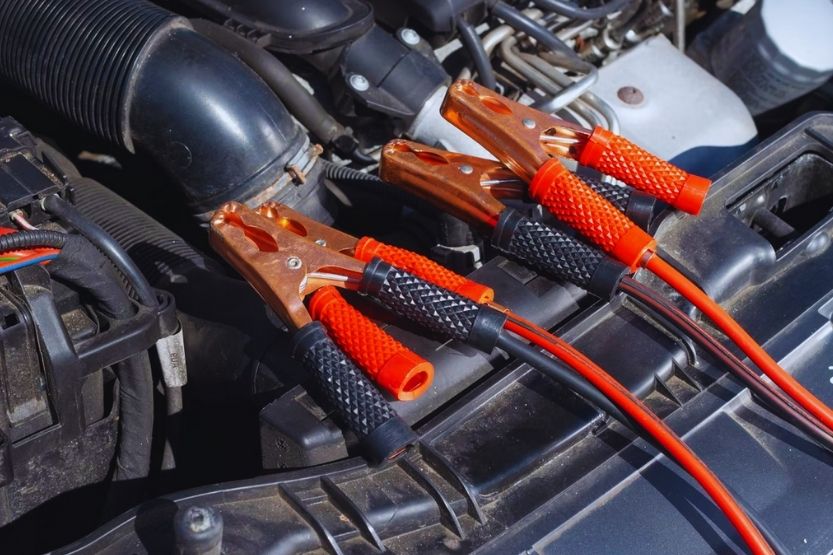
Jumping a car in the rain is not dangerous if you properly do it. Even if it isn’t raining, you have to do the jumpstarting process correctly to avoid any harm.
Here are some reminders when jumpstarting in the rain:
- Avoid raindrops from falling on battery terminals
- The battery must not be frozen before jumpstarting
- Do not connect incompatible cars (e.g., 6-volt and 12-volt batteries)
- Red is positive, and black is negative
- Connect cables carefully, tightly, and securely
- Red clamps must be connected first
- Disconnect the black clamp first
- Don’t let the cables touch each other
Is Jumpstarting a Car in the Rain Safe?
Jumping a Car in the Rain Is Not Dangerous
Jumping a car in the rain is not dangerous. Well, you will most likely get soaking wet. Worse, you might catch a cold or even the flu. But if you wonder if you will get electrocuted by your vehicle, this will not happen.
However, it’s important to think about your safety and your vehicle’s safety. Also, you must think about the safety of the other vehicle that will help you jumpstart your car. It is best to get your car to an area with low traffic.
Fixing a car in the rain is already an inconvenience. It gets even worse if it happens at night. In which case, you have to put out your flashers or warning signals to alert other drivers.
Always Bring an Umbrella
Have you ever considered the importance of the umbrella in this situation? Not all drivers believe that keeping an umbrella in the car is important. But, honestly, it is important during emergencies such as this one.
Prevent the Components from Getting Wet
Even if you can safely jumpstart a car in the rain, you must keep the components under the hood as dry as possible. Droplets of rain may not cause any damage to the car in general. But there are also sensitive electronics under the hood that need protection.
The hood can keep some of the car’s innards as dry as possible. But using an umbrella can help big time, and it is not only for your car but also for you.
Can You Get Electrocuted Jumping a Car in the Rain
Very Low Voltage
You won’t get electrocuted if you jumpstart a car in the rain. The electrical system in vehicles has a very low voltage. It is not high enough to result in electrocution. Therefore, it is entirely safe to jumpstart a car.
Risky If Not Done Correctly
While doing so may not cause electrocution, it can still be risky, especially if it is not done correctly. Suffice to say that while it might not harm humans, it might cause damage to the vehicle.
For instance, if a short circuit happens, it can damage other irreparable parts of the car. Worse, it can damage the other car with the running battery.
Again, can you jump a car in the rain? Experts say it is safe to jump a car in the rain due to insufficient voltage. Jumpstart your car properly and ensure that no water drips on the cables.
Can You Jumpstart Your Car in a Thunderstorm?
Jumpstarting a car in the rain is already a challenge. So, can you imagine how hard it is to jump a car in a thunderstorm?
Well, as far as the act of jumpstarting is concerned, it is possible to jumpstart a car successfully. But, whether you are jumping a car or not, going out during a thunderstorm is not a good idea.
It’s best to wait until the thunderstorm is over.
Can You Jumpstart a Wet Battery?
If you are determined to jumpstart your car in the rain, the car battery will most likely get wet. Now, you are wondering, is it safe to use jumper cables on a wet battery?
Using jumper cables on a wet battery is safe. But if your car battery is soaking wet, make sure to remove excess water first. The hood of your car and an umbrella are enough to prevent the battery from getting soaked with water.
A wet battery poses little or no risk to you. But the water might reach sensitive electronics in the engine compartment. The last thing you would want to happen is to encounter car issues that are more than just a dead battery.
Is It Safe to Use Wet Jumper Cables?
If you are jumpstarting your car in the rain, the chances are that the jumper cables will most likely get wet. So, is it safe to use wet jumper cables?
It is safe to jumpstart your car in the rain using wet jumper cables. However, you have to ensure that they are dry before storing them.
Jumper cables are typically coated in rubber and will indeed be protected from water. However, the clamps have exposed metal, which will rust if stored wet. And, you might not be able to use them anymore in the future.
So, to reiterate, you may use wet jumper cables when jumping a car in the rain. But make sure to wipe them dry before storing them. Besides, your car is not the only thing that needs proper maintenance. You have to take care of your tools too.
Frequently Asked Questions – Is Jumpstarting a Car in the Rain Safe?
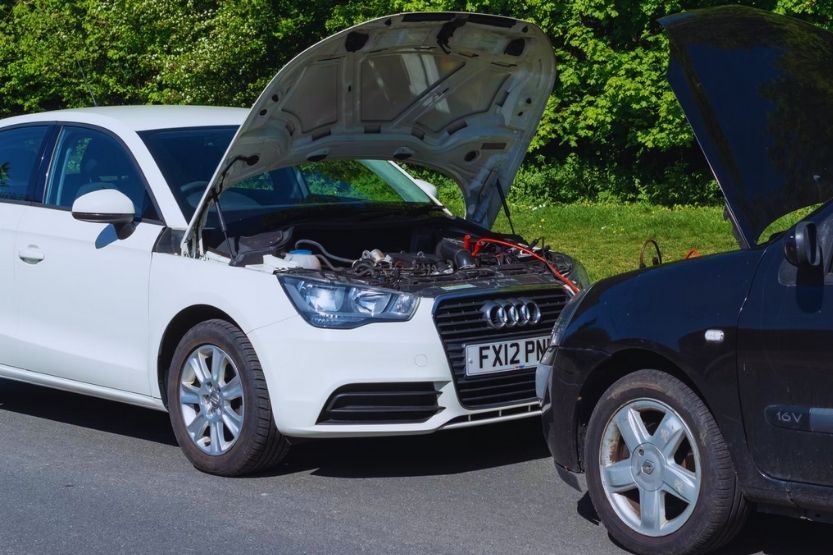
Here are some frequently asked questions about jumpstarting a car in the rain:
Is It Safe to Use Jumper Cables in the Rain?
It is safe to use jumper cables in the rain. Make sure to take the necessary precautionary measures to avoid causing harm to yourself and your vehicle.
Is It Safe to Charge a Car Battery in the Rain?
It is safe to charge a car battery in the rain. It’s safe to charge a battery in any weather condition. Cars are purposefully designed to withstand any weather conditions.
How Long Should You Drive after Jumping a Car?
After jumpstarting your car successfully, you have to leave it running for about 30 minutes. Instead of simply leaving it idle, you can drive it around the streets for more reliable results. Your car battery will charge fully and prevent it from dying on you again.
Can I Charge My Car Outside in the Rain?
Electric vehicles can most likely be charged in the rain because charging plugs and charging stations have protective layers and proper covering shields. This will prevent short circuits, water mixing, current loss, and sparks.
Can You Jump a Car in a Thunderstorm?
The process itself for jumpstarting a car in a thunderstorm is possible. But whether you are jumping a car or not, it is always not advisable to be outdoors if there is a thunderstorm. It’s best to wait for better weather conditions before you attempt to jumpstart your car.
Do I Need to Drive My Car after a Jump Start?
After jumpstarting your car, let it run for about 30 minutes to allow the battery to charge fully. Drive your vehicle continuously for 30 minutes. If not, it might cause your battery to die on you again.
Do I Need to Replace the Battery After Jump Start?
Once you have successfully jumpstarted your car, drive it for about 30 minutes to allow the car battery to charge fully.
If it holds the charge, there is no immediate need to replace your car battery. However, if it doesn’t seem to charge sufficiently, it is time to replace it with a new one.
Can Jumpstarting Damage Your Car?
In essence, jumpstarting is not supposed to damage your car. The task is quite simple and is expected to be done correctly. However, if it is not done properly, there is a potential risk of damaging your car.
Modern vehicles have more electronics inside compared to older vehicles. This means that if the jumpstarting process is incorrectly done, there is a chance that it can cause harm to some electronic components.
An example of this is if you place the clamps on the wrong terminals. This can result in a short circuit and damage parts that are irreparable.
Can You Ruin Your Car by Giving Someone a Jump-start?
If you own a car that will help jumpstart another car, this will most likely not cause any damage. After successfully jumpstarting a car, your car will automatically recharge itself by simply driving it.
In Closing: Can You Jumpstart a Car in the Rain?
In essence, jumpstarting a car in the rain is safe and will not cause any damage. This is because the electrical system in cars is not high enough to pose any danger. The water is not an issue, either, as long as the jumpstarting process is correctly done.
The important thing is to ensure that you’re doing the process correctly. Doing it incorrectly might not cause any harm to you, but it is possible to cause damage to your car. The last thing that you want to happen is for your car to get issues that are far more than just a dead battery.
If you are hesitant to jumpstart it yourself, you can always seek help from a professional technician.
Read next:
What to Do When a Car Died While Driving and Won’t Start
Why Your Car Won’t Turn Over But Has Power
Is My Car Battery Dead If the Radio Still Works?

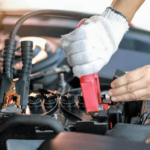
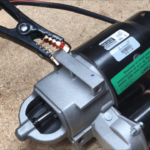

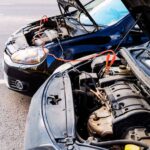


![Read more about the article Bad Alternator Vs Bad Battery [How to Tell]](https://roadsumo.com/wp-content/uploads/2022/02/bad-alternator-vs-bad-battery-300x200.jpg)
